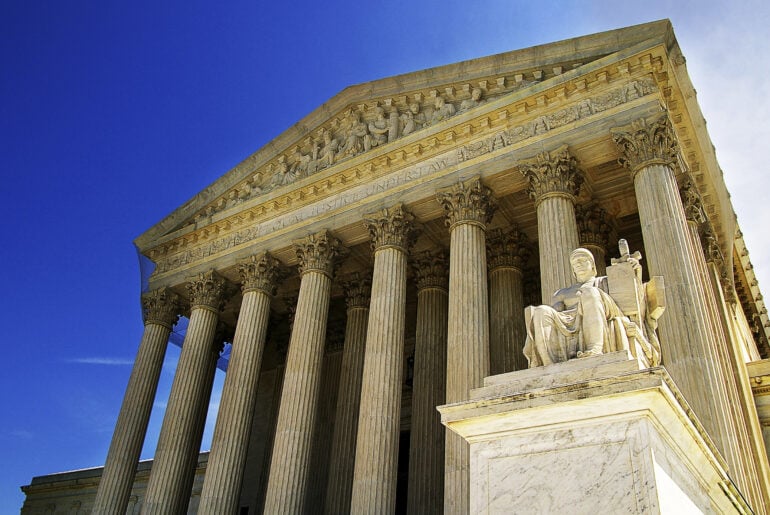For nearly a decade, plaintiffs have been filing lawsuits over the alleged environmental and health consequences associated with per- and polyfluoroalkyl substances — sometimes called forever chemicals. Initially, these lawsuits were largely against early manufacturers of Teflon and other common household products.
But this landscape is rapidly changing. Recently, the range of lawsuits and companies targeted has expanded to include not only manufacturers but also other companies in the chain of commerce — including those that use the chemicals in their finished products.
The types of plaintiffs asserting PFAS-related claims are also expanding. State and local governments have begun filing lawsuits, largely claiming contamination of water supplies.
In one such case, Michigan v. Domtar Industries Inc., filed just last month in Michigan Circuit Court, Michigan’s attorney general seeks to recover from a paper manufacturer because its manufacturing process produced sludge that purportedly contained high levels of PFAS detected in groundwater and surface water.[1]
The primary issues that plaintiffs face in bringing PFAS-related cases are (1) proving that the defendants’ conduct caused their alleged injuries, and (2) establishing the courts’ jurisdiction over the named defendants.
Courts have taken a lenient approach to these issues at the motion-to-dismiss stage, and have declined to dismiss complaints that contain even minimal causal and jurisdictional allegations.
These developments come alongside the U.S. Environmental Protection Agency’s announcement that it plans to issue a rule that will designate two PFAS as hazardous substances under the Comprehensive Environmental Response, Compensation and Liability Act, or CERCLA — also known as the Superfund law — which will expose manufacturers, suppliers and other alleged polluters to cleanup costs associated with contamination caused by PFAS, and additional regulatory costs.[2]
In Brief
PFAS are man-made chemicals that are widely used and long lasting. Manufacturers, importers, suppliers and retailers alike are being hit with claims for their alleged environmental and health effects.
As discovery progresses in the In re: Aqueous Film-Forming Foams multidistrict litigation in the U.S. District Court for the District of South Carolina, and as the EPA and other agencies study potential connections between PFAS exposure and human health effects, emerging legal theories may mean that more entities that have used PFAS are exposed to litigation.
While the causal chain between PFAS and health effects may be attenuated, many PFAS suits narrowly survive motions to dismiss and avoid jurisdictional challenges — paving the way for an uptick in PFAS lawsuits that proceed to discovery and, ultimately, trial.
Alongside these private actions, the EPA’s proposed rule designating PFAS as a hazardous substance under CERCLA may subject entities to increased regulatory actions and costs.
In Depth
PFAS are found in numerous products, including food packaging, nonstick cookware, stain-resistant coatings, personal care products and sealants. Most public exposures occur through the consumption of PFAS-contaminated water or food. PFAS contamination can also occur through skin absorption.[3]
PFAS are allegedly linked to various health conditions such as kidney and testicular cancer, cardiovascular risks, damage to liver function and diminished antibody response to vaccines. The nature and strength of these alleged links, however, is uncertain. And it remains to be seen whether they can be used to establish liability.
Targets of PFAS Litigation
Over the years, plaintiffs have brought several types of PFAS lawsuits. Initially, litigation targeted only PFAS manufacturers. Then, municipalities began suing manufacturers for the alleged pollution that their use of PFAS caused in the states’ water supplies.
The more recent category of PFAS litigation is personal injury tort cases. As information regarding the effects of PFAS on human health becomes more understood and readily available, personal injury cases may increase and become the future of PFAS litigation.
In the coming years, it will no longer be just PFAS manufacturers who face litigation and liability. This has already begun to prove true. The group of defendants has expanded to include, for example, restaurants that use PFAS-containing food wrappers and packaging, and retailers of PFAS-containing clothing items.
On April 25, 2022, plaintiffs brought Lupia v. Recreational Equipment Inc., a class action alleging that REI’s waterproof coats contained PFAS, in the U.S. District Court for the Northern District of California.[4]
In the fast food industry, plaintiffs filed McDowell v. McDonald’s Corp., a class action in the U.S. District Court for the Northern District of Illinois, in March 2022.
And plaintiffs brought another class action, Hussain v. Burger King Corp., in the Northern District of California in April 2022, alleging that each of the respective restaurants’ food wrappers contain harmful quantities of PFAS.[5]
Ongoing Litigation
One of the most significant PFAS cases is the Aqueous Film-Forming Foams Products Liability Litigation, a multidistrict litigation pending in the District of South Carolina.
AFFF is a firefighting foam that has been used by the U.S. Department of Defense since the 1970s, as well as by commercial airports, the oil and gas industry, and local fire departments.[6]
Over 3,000 cases related to AFFF have been transferred to this South Carolina MDL. These cases were consolidated because the plaintiffs are all seeking to recover damages from various PFAS and AFFF manufacturers and suppliers over allegedly contaminated water supplies.[7]
The plaintiffs include municipalities suing for remediation costs associated with the polluted water sources in the states where they are located, and individual plaintiffs seeking damages for personal injury, medical monitoring and property damage.
On Sept. 16, 2022, the district court denied the defendants’ motion for summary judgment based on government contractor immunity.[8] The defendants argued they were entitled to government contractor immunity because they needed to use PFAS in order to comply with the government’s specifications for AFFF; they warned the government of the hazards of which they were aware; and the government made an informed decision about its continued used of AFFF.
Despite these contentions, the court found that there were “hotly contested [factual] issues” that should be presented to a jury to decide.[9] Three of the cases in the MDL have been selected as bellwether cases, and are set to go to trial this year.
Plaintiffs lawyers and putative defendant companies are closely watching the AFFF MDL because many anticipate that these cases will lay the foundation for the future of PFAS mass tort litigation. Until now, there has been limited scientific support for many of the claims raised in litigation.
However, the court has urged the parties, particularly those who brought personal injury lawsuits, to focus their discovery efforts on PFAS exposures and the links to human health. This focus may lead to the emergence of additional evidence supporting liability in both the MDL and forthcoming litigation.[10]
To that end, the court has urged the parties to use the findings of the C8 Science Panel as a starting point. The C8 Science Panel carried out exposure and health studies from 2005 to 2013 in the mid-Ohio Valley communities that were potentially affected by the release of perfluorooctanoic acid, or PFOA — also known as C8 — from the Washington Works plant in Parkersburg, W.Va., since the 1950s.[11]
The panel was composed of three epidemiologists, and was created as part of a settlement agreement in early PFAS litigation. Following its studies, the panel compiled probable link reports, which attempt to explain whether there is a link between PFOA exposure and numerous human diseases or health conditions.[12]
Using those reports as a base, the South Carolina court advised the parties to hone in on the more serious potential illnesses, such as the different types of cancer set forth in the panel’s reporting. The court also stated that it plans to move discovery along quickly, so that the first personal injury case could be set for trial after the first bellwether trial in 2023.
Proving Causation
As with the MDL, in future tort litigation against PFAS manufacturers and retailers, proving or disproving the causal link between the defendant’s role in inserting PFAS into the chain of commerce and a plaintiff’s harm will be critical. As litigation multiplies, causal theories in PFAS litigation rapidly evolve.
Courts are trending toward permitting claims to survive the motion to dismiss stage, even with bare-bones allegations supporting a causal link. While some courts have found that consuming water directly from wells contaminated with PFAS is sufficient to allege proximate cause,[13] other courts have stretched the boundaries of what constitutes sufficient allegations of causation.
In fact, in June 2022, the U.S. District Court for the District of Maine, in Higgins v. Huhtamaki Inc., permitted PFAS claims to proceed past the pleading stage despite a lack of specific allegations that PFAS were a substantial factor in causing the plaintiffs’ harm. The complaint alleged only that PFAS contaminated water eventually made its way to plaintiffs’ property, yet the court denied the defendant’s motion to dismiss.[14]
Relatedly, on Oct. 31, 2022, in Lonsk v. Middlesex Water Co., the U.S. District Court for the District of New Jersey declined to dismiss a claim for trespass based on the putative class’s allegations a manufacturer knew or should have known manufacturing with PFAS would result in contamination that would infiltrate individuals’ properties and cause them harm.[15]
While attenuated causal allegations may survive a motion to dismiss, in September 2022, in In re: E.I. DuPont de Nemours & Co. C-8 Personal Injury Litigation, the U.S. Court of Appeals for the Sixth Circuit stated that general allegations about the harm caused by exposure to PFAS may be insufficient to certify a class.
The court reasoned that the injury caused by a certain level of exposure to a certain type of PFAS linked to one defendant would say “nothing about another class member’s ability to prove risk of injury caused by a different level of exposure to a different amount of a different PFAS linked to a different Defendant.”[16]
Common Jurisdictional Issue
Courts have extended this leniency of permitting claims to proceed on attenuated causal theories to the personal jurisdiction analysis.
In January 2022, in Suez Water N.Y. Inc. v. E.I. DuPont de Nemours & Co., the U.S. District Court for the Southern District of New York found personal jurisdiction where the plaintiffs’ claims and the manufacturing defendants’ actions supplying PFAS to entities in New York were “not completely unmoored from each other.”[17]
The plaintiffs alleged that the out-of-state manufacturing defendants sold products to industrial manufacturers in New York, who then caused PFAS to leak into the municipality’s water supply.
As this case demonstrates, defendants should be aware that some courts are tending to favor broad interpretations of personal jurisdiction — including where the plaintiff just barely satisfies the requisite showing of personal jurisdiction.[18] As a result, plaintiffs may attempt to seek jurisdictional discovery to bolster their defense against initial motions to dismiss.
Conclusion
As the science behind PFAS litigation and regulation continues to develop, PFAS will only become more contentious, and their effects further litigated.
The primary barrier to government and private action against companies has been the lack of knowledge and access to information. With government entities and plaintiffs focused on PFAS and its effects on human health, it is inevitable that new information will spur new litigation strategies, especially in light of courts’ tendencies to permit complaints to survive challenges to jurisdiction and causation at the motion-to-dismiss stage.
Additionally, once the EPA issues its PFAS rule, and as it conducts more research, it will seek to further regulate PFAS and their uses, which will result in enforcement actions against companies not in compliance. As information develops and existing litigation progresses, companies should be mindful of how the various regulatory structures governing the use of PFAS and the trends in tort litigation can affect their business models.
The article was first posted on Law360.
[1] Michigan v. Domtar Industries Inc., No. 22-2606-NZ (Mich. Cir. Ct. Dec. 16, 2022)
[2] Proposed Designation of Perfluorooctanoic Acid (PFOA) and Perfluorooctanesulfonic Acid (PFOS) as CERCLA Hazardous Substances, U.S. Env’t Prot. Agency, https://www.epa.gov/superfund/proposed-designation-perfluorooctanoic-acid-pfoa-and-perfluorooctanesulfonic-acid-pfos (last updated Nov. 2, 2022)
[3] PFAS 101, Dep’t of Def. (2002), https://www.acq.osd.mil/eie/eer/ecc/pfas/pfas101/index.html.
[4] Lupia v. Recreational Equipment Inc., No. 3:22-cv-02510 (N.D. Cal. April 25, 2022).
[5] McDowell v. McDonald’s Corp., No. 1:22-cv-01688 (N.D. Ill. March 31, 2022); Hussain v. Burger King Corp., No. 4:22-cv-02258 (N.D. Cal. Apr. 11, 2022).
[6] PFAS 101, Dep’t of Def
[7] In re Aqueous Film-Forming Foams Products Liability Litigation MDL, No. 2873, U.S. Dist. Ct. Dist. of S.C., https://www.scd.uscourts.gov/mdl-2873/index.asp
[8] In re Aqueous Film-Forming Foams Prods. Liab. Litig., No. MDL No. 2:18-mn-2873-RMG, 2022 U.S. Dist. LEXIS 168634, at *48 (D.S.C. Sep. 16, 2022).
[9] Id.
[10] John Gardella, PFAS Personal Injury Set to Begin on MDL?, 12 Nat’l L. Rev. 283 (2022), https://www.natlawreview.com/article/pfas-personal-injury-set-to-begin-mdl.
[11] C8 Science Panel, http://www.c8sciencepanel.org/.
[12] C8 Probable Link Reports, C8 Science Panel, http://www.c8sciencepanel.org/prob_link.html.
[13] Severa v. Solvay Specialty Polymers USA LLC, 524 F. Supp. 3d 381, 393 (D.N.J. 2021).
[14] Higgins v. Huhtamaki Inc., No. 1:21-cv-00369-NT, 2022 U.S. Dist. LEXIS 111062, at *14–17, *36 (D. Me. June 23, 2022); see also Cornett v. Northrop Grumman Corp., No. 18-CV-06453, 2020 U.S. Dist. LEXIS 1566, at *2–3, *8 (E.D.N.Y. Jan. 6, 2020) (denying motion to dismiss PFAS claims); Kanan v. Thinx Inc., No. CV 20-10341 JVS (JRPx), 2021 U.S. Dist. LEXIS 191225, at *17 (C.D. Cal. June 23, 2021) (explaining” causation versus correlation issue are inappropriate at the motion to dismiss stage”).
[15] Lonsk v. Middlesex Water Co., No. 21-cv-19808, 2022 U.S. Dist. LEXIS 197998 (D.N.J. Oct. 31, 2022).
[16] In re E.I. DuPont de Nemours & Co. C-8 Pers. Injury Litig., No. 22-0305, 2022 U.S. App. LEXIS 25452, at *20 (6th Cir. Sept. 9, 2022) (quotation omitted).
[17] Suez Water N.Y. Inc. v. E.I. DuPont de Nemours & Co., 578 F. Supp. 3d 511, 531 (S.D.N.Y. 2022) (internal citation and quotation omitted).
[18] Id.



